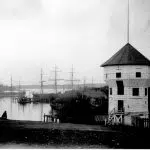
School replacement, increased enrollment among many challenges for Nanaimo-Ladysmith district
NANAIMO — One of the region’s biggest schools needing to be replaced is just one of many challenges facing the Nanaimo-Ladysmith School District over the next 10 years.
School board members were presented with a draft Long Range Facilities Plan during a business committee meeting on Wednesday, Feb. 17. It showed substantial enrollment growth and an extensive building upgrade list as key issues to face moving forward.
Mark Walsh, SD68 secretary-treasurer, said NDSS needs immediate attention through upgrades or complete replacement.
“It’s our number one seismic priority, it’s end of life. School district’s around the province are getting replacement schools right now. This is again a message to our community, the ministry and political partners that this needs to happen.”




